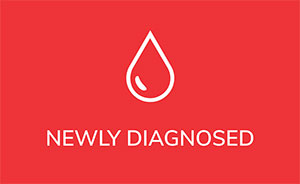INTRODUCTION:
As new and better treatments are developed to treat CLL / SLL, biomarker testing for subtypes of the disease is becoming more important for prognosis and selection of the best treatment options.
In this study presented at the American Society of Hematology’s Annual Meeting and Exhibition (ASH 2021), the researchers evaluated 3,037 patients for:
- Testing frequency
- Timing of testing
- The factors associated with receiving biomarker testing such as age, sex, ethnicity, geographic location, insurance type, and treatment in a community versus an academic clinic
TAKEAWAYS:
- All patients were over the age of 18, had a new diagnosis of CLL / SLL, had more than six months of continuous enrollment, and had no prior treatments from January 2014 to May 2021.
- The median age was 73, 62.3% were male, and 74.6% were white. These numbers are quite representative of the total CLL / SLL population.
- Biomarker testing included:
- Immunoglobulin Heavy-chain Variable (IgHV) region gene mutation status
- FISH (fluorescence in situ hybridization)
- CD38
- ZAP-70
- High-risk markers included: Unmutated IgHV, deletion of chromosomes 11q, and 17p, as well as CD38 present.
- The majority, 92%, of patients received treatment in community practice settings. Of these, 51% had commercial insurance, while the rest had government or other coverage.
- More than HALF did NOT receive biomarker testing at all. Of those who did receive biomarker testing, 99% had it performed prior to treatment.
- Of those with the high-risk biomarkers del(17p), 26.4% received chemotherapy that was almost certainly of no value (but was still toxic) instead of newer and better treatment options such as ibrutinib, acalabrutinib, or venetoclax.
- This was also true in 39.8% of those who were not tested, which is tragic and unforgivable.
- Sub-optimal biomarker testing was more common in the vulnerable or high-risk groups.
CONCLUSIONS:
All patients with CLL / SLL must have appropriate biomarker testing prior to deciding upon any treatment option to understand their prognosis and available treatment options that will be effective for their disease subtype. Sadly, this is still not happening.
CLOSING:
SMART PATIENTS GET SMART CARE! Advocate for yourself and talk with your healthcare provider about the necessity of receiving these critical tests. Get a second opinion from a CLL expert, Print out CLL Society’s simple one-pager on what biomarker testing you need to have done and show it to your healthcare provider at your next appointment.
For more background information on biomarker testing, see this link: TEST BEFORE TREAT™.
For those new to CLL / SLL, here are some primary treatment-related FAQs.
You can read the original ASH 2021 abstract by Asher Chanan-Khan, MBBS, MD from Mayo Clinic at https://ash.confex.com/ash/2021/webprogram/Paper147955.html.
It is disappointing to see how little progress has been made to ensure those living with CLL / SLL are being treated in non-academic healthcare settings.
Stay positive and safe. We are all part of an excellent organization for hope, help, and education.
Michael Green, MD and CLL patient

















